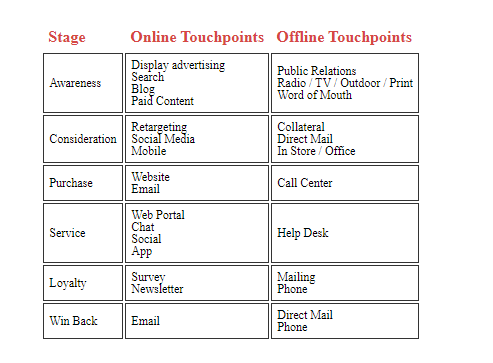Established In 2016, the Customer Data Platform Institute defines the CDP this way, “A Customer Data Platform is a marketer-managed system that creates a persistent, unified customer database that is accessible to other systems.”
That’s quite a mouthful, so let’s break it down.
Marketer Managed
Organizational data systems are managed by different entities: CRM by sales; data management platform by IT; accounting by finance; web sales by digital marketing and so on. These systems have three things in common. They are:
- Managed jealously by and for the entity that controls it.
- Formatted differently from each other, as dictated by the controlling entity.
- Not a good exclusive source of customer information for marketing.
While none of these databases should serve as an exclusive source of customer data for marketing, taken together (along with other available databases) they provide a wealth of information. As the system managed by marketing, a Customer Data Platform provides measurable value by curing the wasteful issues of duplications, typos and different formats.
Persistent
As a persistent database, the records in a CDP survive the initial transactions or interactions that got them placed in a database in the first place. New data becomes a part of each customer’s growing customer record, painting an accurate picture of each customer’s relationship with the organization.
Unified
As a unified database, the CDP brings together all data from every source and stores it in one format defined by the marketing data scientists who create the rules and parameters of the CDP. For example, let’s say that in a single organization, the format for customer addresses differs as follows:
-
CRM — Fully spelled out, as in Street, Avenue, etc.
-
Accounting — Abbreviated, such as St, Ave, etc.
-
CRM from a newly acquired firm — Abbreviated, but with the address number in its own field instead of tied to the street name
Data scientists create one unique address format for customers and write rules that automatically unify the information in the Customer Data Platform. The address example used above is just one of many formats (and one of the simplest) unified by rules written by data scientists.
Accessible
As a persistent and unified database, the Customer Data Platform presents a Single Customer View that is to be shared with and refined for each distinct marketing group.
What Makes a CDP Intelligent?
Any CDP should be able to provide a persistent and unified view of your data. But, if you want to fully leverage your data and make it actionable with deep personalization, you need an Intelligent CDP, one that allows you to tap into the power of Artificial Intelligence and Machine Learning. One example of a free, open source CDP is Pimcore.
Customer Data Platform (CDP) vs. Customer Relationship Management (CRM) and Data Management Platform (DPM)
CRMs and DPMs have been around for quite a while, so why was it necessary to crate the CDP in the first place? To answer that question, here’s a bird’s eye view of the three different data collection systems. The need for the CDP should become obvious.
-
CRM. Born in the ‘90s as an essential part of 1:1 marketing (part 1), CRMs only track the actions a customer has taken intentionally, such as making a purchase or inquiry
-
DMP. DMPs were popularized by online advertising in the 2000s, as they focus on information that is not personally identifiable, like IP addresses, cookies and devices
-
CDP. With the rise of omni-channel marketing and the need to personalize campaigns, Customer Data Platforms were introduced in the mid-2010s to store every interaction with both anonymous and known individuals, including personally identifiable information such as names and addresses
Unlike CRM and DMP, CDP handles data from a large number of sources and keeps that data in order to:
-
Analyze customer lifetime value
-
Be the data source for win-back campaigns to reactivate lost customers
-
Match anonymous first-party data to customer records with personally identifiable data
No wonder the Customer Data Platform has become an indispensable tool for marketers in a relatively short period of time.














